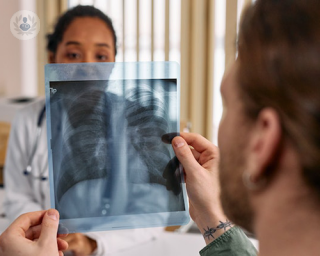Sarcoma
Professor James McCaul - Oral & maxillofacial surgery
Created on: 10-29-2013
Updated on: 10-09-2023
Edited by: Kate Forristal
What is sarcoma?
Sarcoma is a unique form of cancer that originates in the body's connective tissues, encompassing a wide array of crucial components such as fat, blood vessels, nerves, bones, muscles, deep skin tissues, and even cartilage. While it predominantly affects the limbs, including both the upper and lower extremities, it's important to recognise that sarcoma's reach extends beyond these areas. This cancer has the unsettling ability to emerge in diverse anatomical locations throughout the body.
Apart from the arms and legs, sarcoma can also take root in the abdominal region, which includes the stomach and intestines. The presence of sarcoma in these areas can be particularly challenging for diagnosis and treatment due to its proximity to vital organs. Moreover, this malignancy can hide behind the protective barrier of the abdomen, making early detection a complex endeavour. Additionally, sarcoma has been known to infiltrate the female reproductive system, introducing further complexities to its manifestations.

What are the different types of sarcoma?
There are three main types of sarcoma:
- Soft tissue sarcoma – which develops in the supporting or connective tissue, such as the muscle, nerves, tendons, blood vessels and fibrous tissues.
- Bone sarcoma – cancer that starts in the bone, which affects the legs most commonly.
- Gastrointestinal stromal tumours (GIST) – develops in the gastrointestinal tract, which is a long tube that runs from the oesophagus to the anus, and includes the stomach and intestines. Most incidences of GISTs occur in the stomach and small bowel.
What are the symptoms of sarcoma?
In cases of soft tissue sarcoma, there are often no symptoms in the early stages. When symptoms do appear, they may include a noticeable lump or swelling that is usually painless.
Bone sarcoma may be painful with or without a lump and it affects the long bones in the arm or the leg or pelvis. There may be blood in the stool or the stools will have a black, tarry appearance in cases of tumours in the gastrointestinal system.
How is sarcoma diagnosed?
If you notice a lump that is getting bigger you should visit your doctor. The doctor will conduct a medical examination. Imaging tests such as X-ray, ultrasound, a CAT scan or MRI will be required. A biopsy, which is the removal of a small amount of tissue for examination under a microscope, will confirm whether it is cancer.
What are the treatment options for sarcoma?
The treatment that you will need will depend on the stage and grade of cancer and the type of sarcoma that you have. Surgery is usually the first method used to treat sarcoma and the surgeon will remove the tumour. They will also remove an area of normal tissue surrounding the tumour too to reduce the risk of cancer coming back. In some cases, additional radiotherapy or chemotherapy is required.











